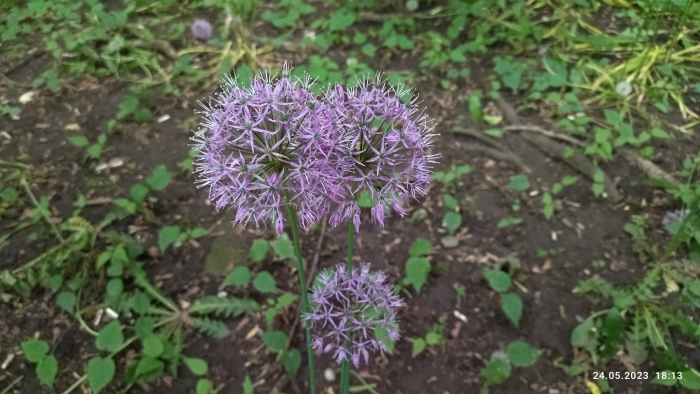Blue Globe Onion
(Allium caeruleum)
Blue Globe Onion (Allium caeruleum)
/
/

© Екатерина Гущина
CC BY 4.0
Image By:
© Екатерина Гущина
Recorded By:
Copyright:
CC BY 4.0
Copyright Notice:
Photo by: © Екатерина Гущина | License Type: CC BY 4.0 | License URL: http://creativecommons.org/licenses/by/4.0/ | Uploader: katto4ka | Publisher: iNaturalist |

























Estimated Native Range
Summary
Allium caeruleum, commonly known as blue globe onion or blue-flowered garlic, is a perennial herb native to various dry habitats in Central Asia, including Kazakhstan, Kyrgyzstan, Siberia, Tajikistan, Uzbekistan, and Xinjiang. It is typically found in arid regions such as dry slopes, plains, and steppes, where it is adapted to the harsh, dry climate. This ornamental bulbous plant can reach up to 31 inches tall and is characterized by its strap-shaped leaves and striking umbels of small, vivid blue flowers that bloom in early summer. The globular flower heads, about one inch wide, are particularly attractive to butterflies and other pollinators.
Blue globe onion is valued for its unique blue flowers, which add a splash of color to rock gardens, borders, and container plantings. It is also appreciated for its low maintenance requirements and resistance to deer browsing. In cultivation, it prefers well-drained soil and can tolerate a range of conditions from full to partial sun. It is hardy in USDA zones 4–8 and has been recognized with the British Royal Horticultural Society’s Award of Garden Merit for its outstanding qualities. While generally disease-free, it can be susceptible to onion fly and thrips. It is also important to avoid overwatering, as this can lead to bulb rot.CC BY-SA 4.0
Blue globe onion is valued for its unique blue flowers, which add a splash of color to rock gardens, borders, and container plantings. It is also appreciated for its low maintenance requirements and resistance to deer browsing. In cultivation, it prefers well-drained soil and can tolerate a range of conditions from full to partial sun. It is hardy in USDA zones 4–8 and has been recognized with the British Royal Horticultural Society’s Award of Garden Merit for its outstanding qualities. While generally disease-free, it can be susceptible to onion fly and thrips. It is also important to avoid overwatering, as this can lead to bulb rot.CC BY-SA 4.0
Plant Description
- Plant Type: Herb, Bulb
- Height: 1-2 feet
- Width: 0.5-1 feet
- Growth Rate: Moderate
- Flower Color: Blue
- Flowering Season: Spring, Summer
- Leaf Retention: Deciduous
Growth Requirements
- Sun: Full Sun, Part Shade
- Water: Low, Medium
- Drainage: Fast, Medium
Common Uses
Border Plant, Butterfly Garden, Deer Resistant, Drought Tolerant, Low Maintenance, Rabbit Resistant, Rock Garden
Natural Habitat
Native to arid regions such as dry slopes, plains, and steppes in Central Asia
Other Names
Common Names: Blue Globe Onion, Blue-of-the-Heavens, Blue Ornamental Onion, Blue Flowered Garlic
Scientific Names: , Allium caeruleum, Allium azureum, Allium caerulescens, Allium coeruleum, Allium viviparum,
GBIF Accepted Name: